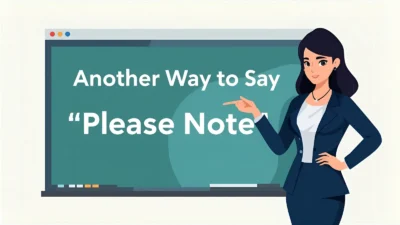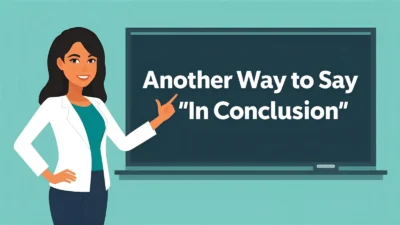The phrase “pros and cons” is a common way to describe the positive and negative aspects of something. It’s simple, clear, and widely understood, which makes it useful in both casual and professional settings. However, if used too frequently, it can feel repetitive or lack nuance. By using different alternatives, you can match the tone, formality, and context of your communication more effectively—whether you’re writing an essay, delivering a presentation, or making a business case.
In this article, you’ll find 35 smart alternatives to “pros and cons,” complete with meanings, examples, best uses, and tone descriptions.
1. Advantages and Disadvantages
Meaning: Outlines the positive and negative sides of an issue.
Example: “Let’s review the advantages and disadvantages of remote work.”
Best Use: Academic and professional writing.
Tone: Formal, balanced.
2. Benefits and Drawbacks
Meaning: Emphasizes helpful vs. problematic aspects.
Example: “The benefits and drawbacks of electric cars are worth discussing.”
Best Use: Business reports, essays, analysis.
Tone: Neutral, professional.
3. Strengths and Weaknesses
Meaning: Focuses on strong points and limitations.
Example: “Every business model has its strengths and weaknesses.”
Best Use: SWOT analysis, evaluations.
Tone: Analytical, formal.
4. Upsides and Downsides
Meaning: Informal way to discuss positives and negatives.
Example: “There are upsides and downsides to social media.”
Best Use: Casual writing, conversations.
Tone: Relaxed, conversational.
5. Positives and Negatives
Meaning: Straightforward pros vs. cons.
Example: “The positives and negatives of this plan must be weighed.”
Best Use: General, versatile use.
Tone: Neutral, clear.
6. Opportunities and Challenges
Meaning: Frames situations in a forward-looking way.
Example: “Globalization brings both opportunities and challenges.”
Best Use: Business, leadership, motivational contexts.
Tone: Optimistic, professional.
7. Gains and Losses
Meaning: Highlights what can be achieved vs. sacrificed.
Example: “Investors should consider the potential gains and losses.”
Best Use: Financial, business, economics.
Tone: Analytical, formal.
8. Merits and Demerits
Meaning: More formal alternative to pros and cons.
Example: “Let’s evaluate the merits and demerits of this proposal.”
Best Use: Academic, legal, formal settings.
Tone: Scholarly, professional.
9. Assets and Liabilities
Meaning: Positive vs. negative aspects, drawn from finance.
Example: “The company must weigh its assets and liabilities before expansion.”
Best Use: Business, economics, law.
Tone: Technical, formal.
10. Good and Bad Points
Meaning: Simplest form of pros and cons.
Example: “Let’s list the good and bad points of this plan.”
Best Use: Everyday conversations, teaching.
Tone: Informal, straightforward.
11. Rewards and Risks
Meaning: Balances potential benefits with possible dangers.
Example: “Entrepreneurship comes with rewards and risks.”
Best Use: Business, finance, strategy.
Tone: Serious, pragmatic.
12. Opportunities and Threats
Meaning: From SWOT analysis—external pros vs. cons.
Example: “The market presents both opportunities and threats.”
Best Use: Strategic planning, analysis.
Tone: Analytical, formal.
13. Pluses and Minuses
Meaning: Casual math-inspired alternative.
Example: “There are a few pluses and minuses to online education.”
Best Use: Informal speech or writing.
Tone: Conversational, easygoing.
14. Boons and Banes
Meaning: Literary way of saying blessings and curses.
Example: “Technology can be both a boon and a bane.”
Best Use: Speeches, essays, creative writing.
Tone: Dramatic, literary.
15. Strong Points and Weak Points
Meaning: Direct assessment of positives vs. negatives.
Example: “We should review the strong points and weak points of each candidate.”
Best Use: Evaluations, education.
Tone: Neutral, clear.
16. Benefits and Liabilities
Meaning: Combines advantages with possible burdens.
Example: “Let’s consider the benefits and liabilities of adopting AI tools.”
Best Use: Business, legal, professional.
Tone: Formal, precise.
17. Peaks and Pitfalls
Meaning: Metaphorical expression of highs and lows.
Example: “Every career has its peaks and pitfalls.”
Best Use: Speeches, motivational writing.
Tone: Figurative, engaging.
18. Virtues and Vices
Meaning: Moral perspective on good vs. bad.
Example: “The internet has its virtues and vices.”
Best Use: Essays, philosophical writing.
Tone: Reflective, moralistic.
19. Bright Side and Dark Side
Meaning: Metaphorical contrast of positives and negatives.
Example: “Let’s examine the bright side and dark side of globalization.”
Best Use: Creative writing, speeches.
Tone: Dramatic, figurative.
20. Rewards and Penalties
Meaning: What you gain vs. what you risk losing.
Example: “Breaking the rules has rewards and penalties.”
Best Use: Legal, workplace policies.
Tone: Formal, structured.
21. Costs and Benefits
Meaning: A classic analysis framework.
Example: “The costs and benefits of the new policy must be considered.”
Best Use: Economics, business, policy writing.
Tone: Analytical, professional.
22. Prospects and Limitations
Meaning: Focuses on future potential and current restrictions.
Example: “We need to weigh the prospects and limitations of renewable energy.”
Best Use: Academic, professional analysis.
Tone: Formal, forward-looking.
23. Blessings and Curses
Meaning: More dramatic framing of positives vs. negatives.
Example: “Social media is both a blessing and a curse.”
Best Use: Creative, rhetorical, informal.
Tone: Emotional, expressive.
24. Benefits and Shortcomings
Meaning: Strong points vs. flaws.
Example: “The benefits and shortcomings of this method should be clear.”
Best Use: Reports, critiques, reviews.
Tone: Analytical, professional.
25. Highlights and Lowlights
Meaning: Best and worst features.
Example: “The highlights and lowlights of the season are worth reviewing.”
Best Use: Media, sports, reviews.
Tone: Conversational, modern.
Conclusion
The phrase “pros and cons” is clear and versatile, but alternatives like advantages and disadvantages, benefits and drawbacks, or strengths and weaknesses let you tailor your message to fit the tone and context. Whether you need something formal (merits and demerits, costs and benefits), casual (pluses and minuses, upsides and downsides), or creative (boons and banes, peaks and pitfalls), these variations give you flexibility and nuance in your communication.



